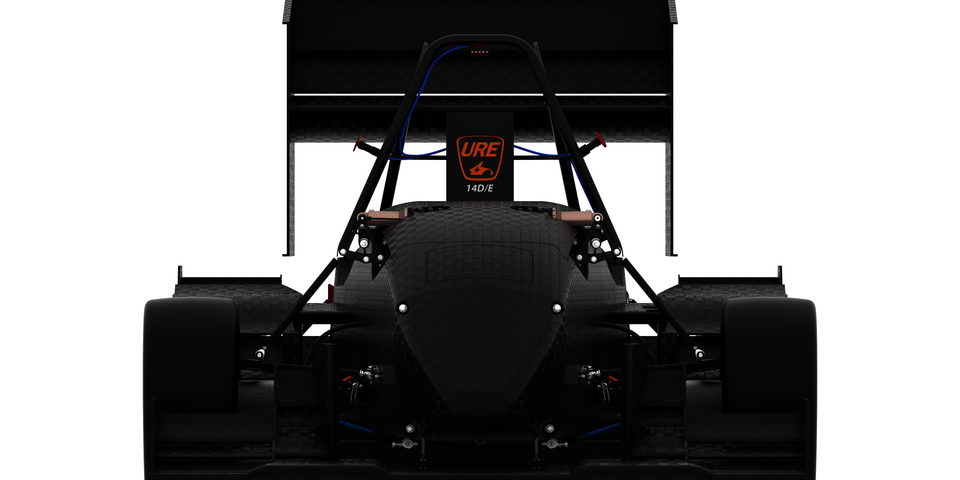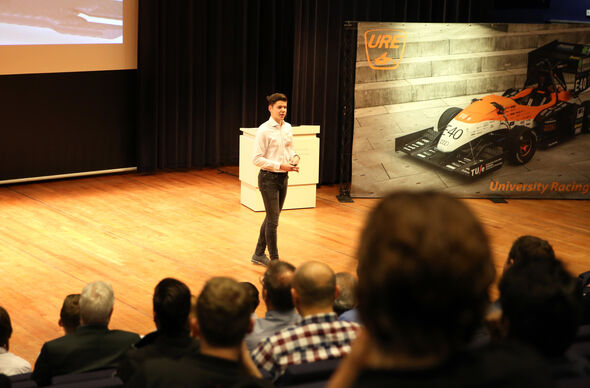URE makes a driver superfluous in under three hours
Lighter, faster, more sustainable, safer. Just when you think not an ounce of fat can be lost, URE manages it. On Wednesday the student team announced the specifications of the URE14. Unique and remarkable: the electric racing car can be converted to create a fully self-driving vehicle in under three hours.
A speedball on the road and easy to handle in the pits. The URE14 has all the right qualities to land the prizes. During the summer months, the URE student team will be taking the racing car to circuits in the Netherlands, Italy and Germany. The racing car from Eindhoven will be taking part in two competitions: an electric class and the driverless class of the Formula Student.
In the Blauwe Zaal, Dion Engels, URE's team manager, is showing the vehicle's latest gadgets. For the time being revealing them only on photographs and drawings. The actual presentation of the racing car will be held in June. The technical innovations speak for themselves and expectations are high. Work has been in progress for the past seven months.
Conversion
“The biggest 'thing' is the autonomy we've built into the car,” says Engels. “What's more, the URE14 can be converted from a racing car into a fully self-driving vehicle in under three hours. Personally, I feel the way we've developed the cooling system is a great achievement in itself.”
The build is now the next step, he announces. “It must be ready in June and a month later we'll start racing. We are going to Assen, Bugatti's testing track and the Hockenheimring in Germany. Only in Italy will we be running the car in its driverless form.”
Driving seat
To enable the driverless drive, sensors and cameras are mounted on the flanks of the car. They are connected with a computer on the rear of the car that calculates the situation incredibly quickly, operates the pedals and does the steering. The honor of being in the driving seat is less important this season. Engels: “It's a whole different ballgame now. It's chiefly about the fifty, sixty people who have worked as a team to build the car. Not about the one individual that gets to race.”
Striking specifications
- The ‘backpack’ on the rear of the car containing an onboard computer Nvidia Drive PX2
- Mounted on the front are two sensors and cameras with a range of 25 meters and accurate to within 10 centimeters, IBEO LiDar
- An autonomous braking system that can be mounted or removed quickly and in one piece.
- 317 meters of cables are contained in the URE14. These connect all the electronic parts (which can be disassembled) needed for driverless driving.
- The battery supplies 8.3 kWh and weighs 2.8 kilos less than its predecessor. The power source has been printed in 3D and is fire safe.
- Magnesium rims each weighing 1.6 kilos have helped reduce the total weight.
- The fourwheel drive with a separate electric motor supplying 30 kW for each wheel, each capable of withstanding 18,000 revolutions per minute.
- The aluminum casing on the drive system is 187 grams lighter per wheel than in the previous version and cools 53 percent better. The casing with a ‘double helix’ structure on the inner side has been made using SLM (Selective Laser Melting).



Discussion